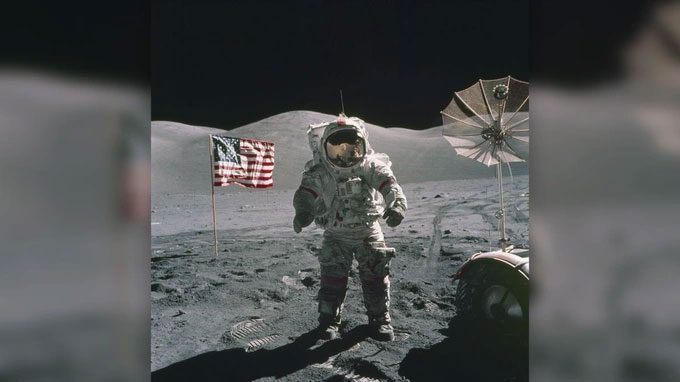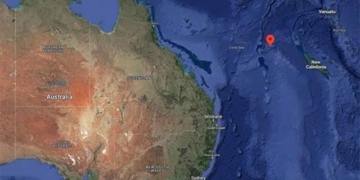If planting a flag on the Moon is not an act of asserting sovereignty, then what truly signifies ownership, and can anyone genuinely own the Moon?
Two flags of different nations flutter on the eerily quiet, desolate surface of the Moon. One is the starry and striped flag of the United States, and the other is the deep red flag of China. However, if you were to ask any officials from these countries, they would assert that these flags do not represent ownership of property or territorial sovereignty.

Illustration of an astronaut’s footprint on the Moon. (Photo: Caspar Benson).
When the Soviet Union’s Sputnik 1, the world’s first artificial satellite, soared into the sky in October 1957, it opened entirely new frontiers. One of these was science, but it also encompassed legal realms. In the following decade, the international community drafted the Outer Space Treaty in 1967, which was the first legal document concerning space exploration.
This treaty is the most influential space law, although its enforcement is quite challenging. “This is not a code of conduct,” says Michelle Hanlon, a space law expert at the University of Mississippi School of Law, “These are merely guidelines and principles.”
Despite its lack of practical enforceability, the treaty outlines clear principles regarding countries claiming land in space. Article 2 of the treaty excludes the possibility of any nation claiming ownership of celestial bodies. Lawyer Halon states, “No nation can claim sovereignty over the Moon.” However, when it comes to constructing structures such as research bases and habitats on the Moon, things become more complicated. “From another perspective, isn’t this a form of territory?” Halon adds.
According to Article 3 of the Outer Space Treaty, the International Declaration of Human Rights has a certain influence when applied to property on the Moon. This implies that individuals have fundamental rights to property. Hypothetically, this means anyone could build a house on the Moon and have rights to that house. In practice, some individuals have claimed ownership of portions of the Moon, including Robert Coles, the former president of the Hayden Planetarium of New York, who made efforts to sell portions of Moon samples for $1 each in 1955.
However, Article 12 of the Outer Space Treaty places a limitation on such efforts. This provision states that all parties can utilize everything installed on other celestial bodies. In other words, it would become public property. The Moon Agreement of 1979 sought to harmonize Article 2 and Article 12 of the Outer Space Treaty by stipulating that any commercial entity or individual operating in space would be considered part of the nation to which that entity or individual belongs, rather than as independent entities.
Yet, to date, the United States, Russia, and China have not ratified this agreement, and thus much of the Outer Space Treaty is still deemed ineffective. As NASA’s Artemis Program and the China-Russia lunar base project commence, space lawyers will need to work diligently to reconcile the provisions of Article 2 and Article 12 of the treaty.

An astronaut from Apollo 17 walking on the Moon’s surface, with the American flag in the background (Photo: NASA/JPL).
More recently, NASA has attempted to address gaps in space law through the Artemis Accords, an international agreement aimed at facilitating future space exploration. Based on the Outer Space Treaty, The Artemis Accords establish a series of non-binding principles governing activities on several celestial bodies, including the Moon. Among these principles is the recognition of certain areas on the Moon, such as the landing site of Russia’s Luna probe and Neil Armstrong’s footprints, as protected outer space heritage.
Notably, this agreement also allows entities to exploit and utilize extraterrestrial resources, but not all nations are enthusiastic about this aspect. To date, 21 countries have signed the Artemis Accords, although some participants, including Russia, have rejected clauses they perceive as granting unfair advantages that benefit the United States.
Additionally, there are other ways to assert ownership that may not seem like direct claims over Moon properties; for instance, the use of scientific equipment on the Moon could become a land claim if the research team prohibits others from coming too close to their equipment. All of these issues are sure to become focal points in space law over the coming decades.


















































